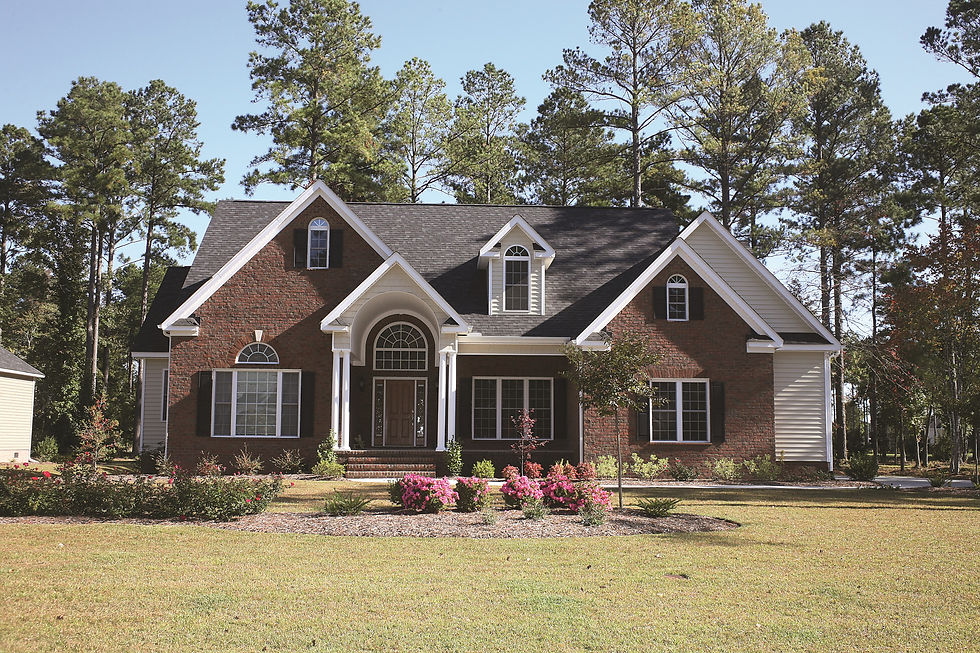
GREEN BUILDING
As the environmental impact of building becomes more apparent, "green building" gains momentum. Green, or sustainable, building is the practice of creating and using healthier and more resource-efficient models of construction, operation, and maintenance. These include such concerns as rising energy costs, the need to ensure clean water and minimize water usage, and the need to improve air quality. In short, Scheper Custom Homes strives to maximize efficiency and sustainability in every aspect of new home construction. It also encourages environmental awareness and stewardship and more efficient use of increasingly scarce resources and helps to conserve them for future generations. Below are several green options that we can use during construction.
ENERGY STAR, administered nationally by the U.S. Department of Energy in conjunction with the U.S. Environmental Protection Agency, offers a comprehensive, whole-house approach to improving energy efficiency and comfort of homes, while helping to protect the environment. Third party quality assurance checks on our work and homeowners can be confident their energy efficiency improvements are high quality.
Save Energy and Money with ENERGY STAR certified windows that lowers household energy bills by an average of 12 percent nationwide. Lower energy consumption also reduces greenhouse gas emissions from power plants and shrinks a house's carbon footprint.
Geothermal Heat Pumps (GHPs) are among the most efficient and comfortable heating and cooling technologies currently available, because they use the earth's natural heat to provide heating, cooling, and often, water heating. There are two types that we use: A closed loop system and an open loop system. The primary difference between open and closed looped systems is the use of ground water.
An Open Loop System is less common, you need to have an ample source of ground water. An open loop system is connected directly to a ground water source such as a well or pond and directly pumps the water into a building to the heat pump unit where it is used for heating and cooling. There are several ways that open loop geothermal heat systems can dispose of water. One is through surface drainage, where the water is deposited to a low area, such as a pond or river. Another method of ridding of water is re-injection. In this process, water is pumped back into the water source through a separate discharge well. In returning the water back to the earth, it is important to note that there is no pollution generated. The only difference in the water once processed through the geothermal heat pump is a slight change in temperature.
R-Value is a measure of thermal materials and assemblies of materials (such as insulation panels, floors, and walls) in the building and construction industry. It gives an indication of how quickly they will lose heat (their thermal resistance). The higher the value of R, the better the thermal performance and heat retention of the material or assembly, and the slower any heat loss. The R-value for a given material or assembly depends on its resistance to heat conduction, as well as the thickness and any heat losses due to convection and radiative heat transfer.
HERS RATING is a home energy rating that involves an analysis of a home's construction plans and onsite inspections. Based on the home's plans, the Home Energy Rater uses an energy efficiency software package to perform an energy analysis of the home's design. This analysis yields a projected, pre-construction HERS Index. Upon completion of the plan review, the rater will work with the builder to identify the energy efficiency improvements needed to ensure the house will meet ENERGY STAR performance guidelines. The rater then conducts onsite inspections, typically including a blower door test (to test the leakiness of the house) and a duct test (to test the leakiness of the ducts). Results of these tests, along with inputs derived from the plan review, are used to generate the HERS Index score for the home. The lower a home's HERS Index, the more energy efficient it is in comparison to the HERS Reference Home. Each 1-point decrease in the HERS Index corresponds to a 1% reduction in energy consumption compared to the HERS Reference Home. Thus a home with a HERS Index of 85 is 15% more energy efficient than the HERS Reference Home and a home with a HERS Index of 80 is 20% more energy efficient.

